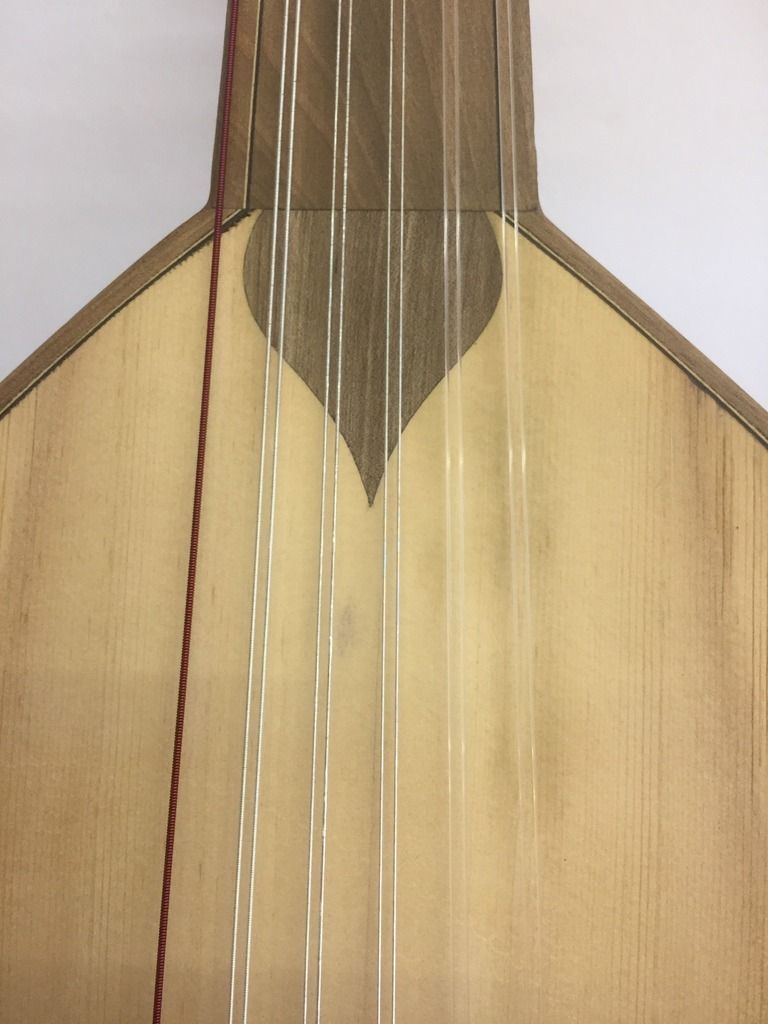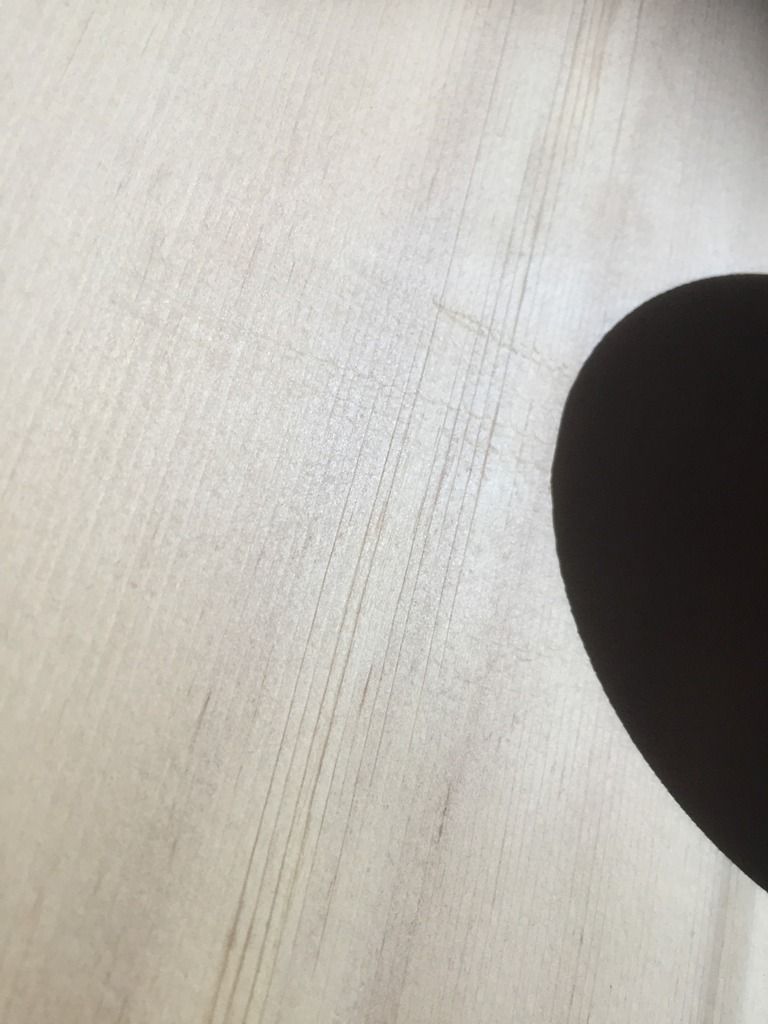
obar - 7-10-2017 at 02:11 AM
Hello! I recieved a syrian oud from my significant other last december, and have been delving into oud-land the last six months. I play at least an
hour every day, and as a result, the fingerboard and some parts of the ceder top is getting increasingly dirty from finger grease. I went to a luthier
today and asked how to clean it. He said to use regular soap (and warned me that it could raise grains in the top). I would just like to get a second
opinion from a more experienced oud-player than myself. How would you guys go about cleaning untreated ceder wood? It's a cheap oud, but it has a very
nice mellow tone to it, and I don't want to damage it or take away from the sound.
Any help or advice would be very appreciated! Thanks!
EDIT: I live in Sweden, so there are not that many oud specialists to ask here...
jdowning - 7-10-2017 at 04:51 AM
If the dirt is just surface grime you could try using a good quality artist's soft plastic eraser rubbing lightly in the direction of the wood grain
to remove the dirt.
Cedar is a soft, absorbent wood that will readily soak up oil and grease. If the dirt is grease that has penetrated into the wood then you will likely
do more damage trying to remove it - do not try using soap and water (!) or chemical grease solvents. This being the case then you should just leave
well alone and live with the staining as part of the history of the instrument.
Prevention is always the best policy - play with clean hands and do not otherwise allow a bare arm to contact the edges of the sound board, wear clean
long sleeved clothing
MattOud - 7-10-2017 at 07:55 AM
along with what was mentioned above using the eraser...there is a new product I found recently from Lee Valley that may do exactly what you want.
It is called Hand Block by a company called sandflex. They are about the size of a bar of soap, and come in 3 styles, Hard, Medium, or fine. It has
grit in it but it is so extremely mild. I would use the fine to start and see if you could rub it off as jdowning suggests!
Here is a link to see the prioduct online: https://www.amazon.com/Klingspor-Sandflex-Hand-Block-Fine/dp/B005JSS...
or here: http://www.leevalley.com/en/wood/page.aspx?p=10509&cat=1,230,64...
Alfaraby - 7-10-2017 at 03:56 PM
Some shots would have shed more light on your oud health/hygiene condition.
I'd recommend super fine (00, 0000 grade) steal wool. It's cheep, available everywhere and adjustable (in a sense of making the right grip for both
your hand and the cleaned surface). Make long strokes with the wood grains direction, rub smoothly with moderate pressure on the wood, never too hard
and wipe with clean lint free cloth.
To prevent future similar results, always wash your hands before playing, a rule that applies to every music instruments, not only ouds. Then get some
blond Shellac and wipe the soundboard with similar strokes.. It shall make an ultra thin coat of maybe a micron or two, that will isolate the
soundboard from fingerprints stains.
On the other hand - excuse me for asking - but why, for heavens sake, should hands touch the soundboard, in the first place ? I have an oud since 1991
with zero stains on the coated soundboard.The right hand plucks the strings with a pick/plectrum/quill/horn/whatever, while the left hand is busy
producing sounds from the fingerboard, which is stain proof anyway. You'd seldom reach the notes on top of the soundboard, beyond the joint. Well, at
least not in the beginnings.
Once you're done with playing, lean your oud against a sofa's back.
End of scene.
Take care fellow
Yours indeed
Alfaraby
obar - 7-11-2017 at 04:50 AM
Thank you all for your replies! I do take care to clean my hands before playing, but I also often play for longer periods which makes my hands sweaty
etc.
jdowning: That "history of the instrument" was kind of assuring to me hehe, but at the same time I don't want to be disrespectful to it either. Never
the less, thank you! I will look into the eraser!
I have been playing music for some 15 years, so hand hygiene isn't new to me, and why it is important. But of course, this can't be stressed enough

Mattoud: thank you very much for the tip! I will check it out, but I might be inclined to test the steel wool first, as it is, like alfaraby pointed
out, much more avaliable.
Alfaraby: thank you very much! Regarding playing on the soundboard, I rarely do it, but sometimes it happen that I want to reach the notes above the
high G-note. Is this really that rare? I had the impression that professional oud players do it regularly (or from time to time anyway)? I have played
guitar for a long time and violin as well, so the oud is kind of a perfect middle ground for me, so I already know my way around the finger board even
though I indeed have not been playing oud that long.
I will uplead some photos for you so you can have a look!
edit: pic

SamirCanada - 7-11-2017 at 05:43 AM
for what its worth, my recommendation is do exactly what John said and don't be tempted by any abrasives whatsoever.
jdowning - 7-11-2017 at 08:54 AM
Be aware that steel wool may be sold treated with oil (to prevent rusting in storage) so should never be used for abrading wood as it will contaminate
the surface. Steel wool manufactured specifically for wood finishing is oil free.
However, I am with Samir and would avoid use of abrasives - no matter how fine - as these remove material from the sound board and if the stain has
penetrated may not be successful in removing it anyway. A local area treated with abrasives will reveal a fresh wood surface that may also be more
obvious (and troubling) than the original stain if - as is likely - the uncoated surrounding sound board wood has developed some natural patina or
colouration due to exposure to daylight. Then you might be into refinishing the entire sound board for cosmetic reasons!
Good luck and let us know how you manage.
MattOud - 7-16-2017 at 10:27 AM
I agree with the above advice that you should NEVER sand the fingerboard with abrasives. I apologize if i misled in my post.
Obar, i read your post as saying you merely wanted to 'clean' the fingerboard, and thus after reading a suggestion to use an eraser, it made me think
of the one i suggested above, which if you use the fine, is very much like an eraser.
One should try it(on a sample piece) to see. I have used it on my OUDs to clean some marks and it worked a charm with no mark left. I didn't rub hard,
just lightly enough to remove some marks. It is mild imo.
Regardless, we agree NO abrasives should be used for cleaning at all, as those with experience above suggest.
Hopefully it works out for you whatever method you use!
obar - 7-18-2017 at 01:19 AM
I thank you all for your great advice! i will let you know how it works out when I have time on my hands (super busy at the moment)...
Bringing this up made me think about the playing on the sound board thing a bit. Is it an insane idea to extend the fingerboard a bit up on top of the
sound board by gluing a thin piece of wood on top of it (and the original finger board as well)?
Also, speaking of abrasives, my oud has taken some damage from before I recieved it. Scratches on the sound board for example. Should I try to sand it
down a bit or just leave it alone? pic below

EDIT: ok it looks like photobucket is causing me some problems... There are some very shallow scratches in the wood. Sand or no?
Thanks in advance!
jdowning - 7-19-2017 at 04:27 AM
It is not unusual to find ouds that have the fingerboard extending on to the sound board as far as the main sound hole. These extensions are usually
set into the sound board level with the sound board surface not above it.
Whether or not the fingerboard extensions are commonly used by oud players to play in higher positions than the fretboard allows I am not qualified to
say. I suspect however that these extensions are partly functional and partly decorative.
Adding a fingerboard extension as you suggest would not be a good idea in my opinion as it would alter the string geometry most likely requiring
raising the nut string height and bridge height as well to maintain string clearances over the added fingerboard depth - and all just for cosmetic
reasons. I would leave well alone. If it aint broke don't fix it!
By way of comparison the six course European lutes of the 16th C were fretted (with tied gut frets) only as far as the neck joint (usually 8 frets on
the fingerboard) but a lute player would, on occasion, be required to reach as far as the 12th fret position (1/2 string length, an octave higher) on
the sound board for the first 3 courses. Some modern lute players will add little wooden frets glued to the sound board for these higher positions but
there is very little historical evidence for these. Indeed playing fretless for the higher positions has some advantage in allowing the player to
finely adjust intonation to compensate for string thickness - particularly if gut strings are used - just as an oud player will do. These early lutes
did not usually employ fingerboard extensions on the sound board.
Also it is generally not a good idea to selectively remove material from a sound board by use of abrasives (including steel wool) unless you really
know what you are doing - say in attempting to improve the acoustic response of an oud.



